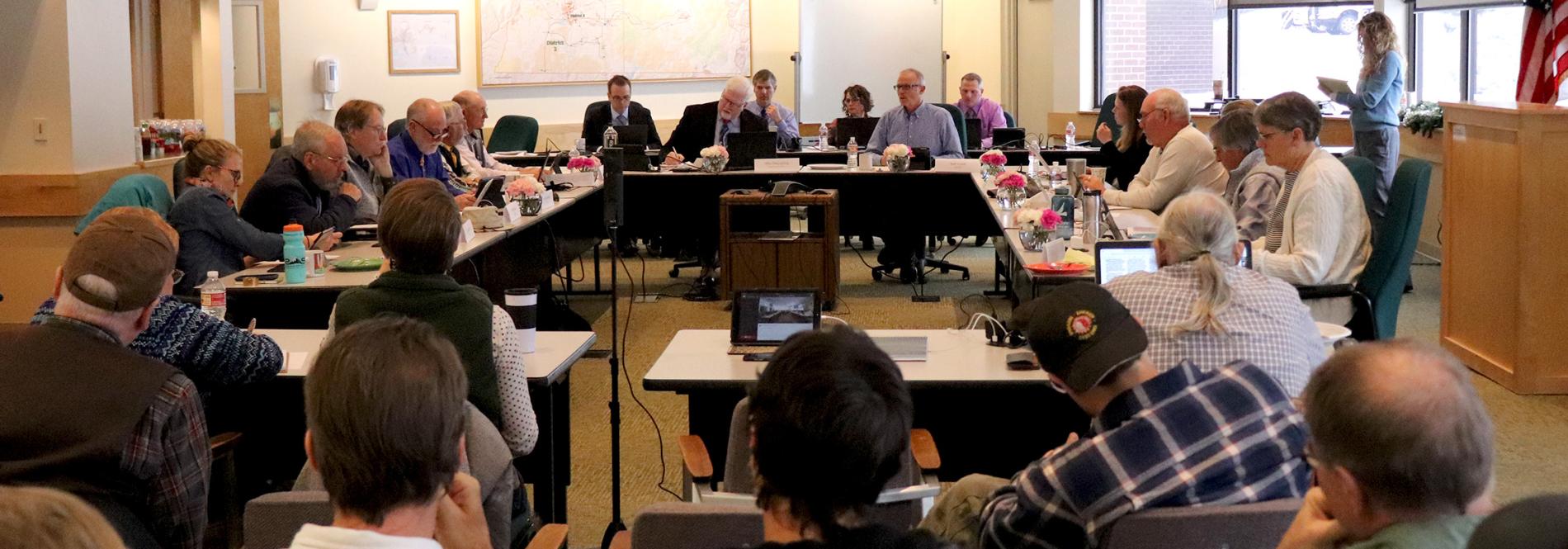
La Plata Electric sets strategic goal for reducing carbon footprint
Research getting underway to determine benchmarks at the cooperative
DURANGO, Colo. – La Plata Electric Association (LPEA) has adopted the long-term strategic goal to reduce its carbon footprint by 50 percent, from 2018 levels, by year 2030, while keeping its cost of electricity lower than 70 percent of its Colorado rural electric cooperative peers.
“The focus of this work has emerged from our strategic planning retreats,” said Ron Meier, LPEA manager of engineering and member relations. “If you look at the statement, it contains two elements that are very important for our membership – environmental stewardship and costs.”
As Meier noted, it’s important for LPEA to provide a template for both the Board of Directors and staff to guide the cooperative’s direction going forward. The next step is to establish the metrics, create the benchmarks.
“Now the real work begins,” he said. “How do we establish our benchmarks, and how to we determine the best course for us to pursue?”
In example, he cited installing charging stations for electric vehicles, which can encourage growth of the electric vehicle industry. As he notes, by doing this, LPEA will potentially be distributing more electricity, possibly not generated by a non-fossil fuel source, but at the same time, how does that measure with decreasing the fossil fuel emissions coming from a traditional vehicle’s gasoline tailpipe?
“Next to electricity generation, transportation has the greatest impact when it comes to carbon footprint,” he said. “These are the things we’re going to need to study and evaluate.”
“There’s a process we’re going to need to go through to put some substance into what 50 percent reduction means,” said CEO Mike Dreyspring. “The over-arching objective is de-carbonization in time. That’s what we’re shooting for. This is the beginning of a challenging and exciting journey for us.”
Dreyspring and Meier point out that reducing carbon footprint is different from increasing local renewable generation, but it doesn’t preclude it. New technologies that have not been put into place or even invented yet, may not be “renewable” by current definition, but they will reduce LPEA’s carbon footprint.
“Not everyone can agree one way or another about climate change or renewables, which are things we cannot necessarily control,” said Dreyspring. “But what we can agree on is that de-carbonization is something we can actually DO. Though as a cooperative that supports its consumer-members, whatever we pursue, we want to make sure that our rates remain competitive, thus the strategic goal to keep costs in line with our peers.”
The stated 70 percent of LPEA’s Colorado’s cooperative peers is essentially where the co-op’s rates are today.
While the launch of this effort is now underway, Dreyspring and Meier caution, because of the complexity of analysis, it could take several months to benchmark the numbers. LPEA staff plans to work with energy efficiency professionals, sustainability proponents and the utility industry as a whole to build accurate metrics.
“We feel the goal of 2030 is realistic,” said Meier, noting that as accomplishments can be made sooner, they will be. “We want to do all we can for the benefit of our consumer-members, so we want to make sure we’re prudent and study everything as we proceed. We will keep our members informed of what we learn and how we plan to evolve as we move along this road to the future.”
LPEA, a Touchstone Energy Cooperative celebrating 80 years in 2019, provides to its more than 30,000 members, with in excess of 43,000 meters, safe, reliable electricity at the lowest reasonable cost, while being environmentally responsible.
